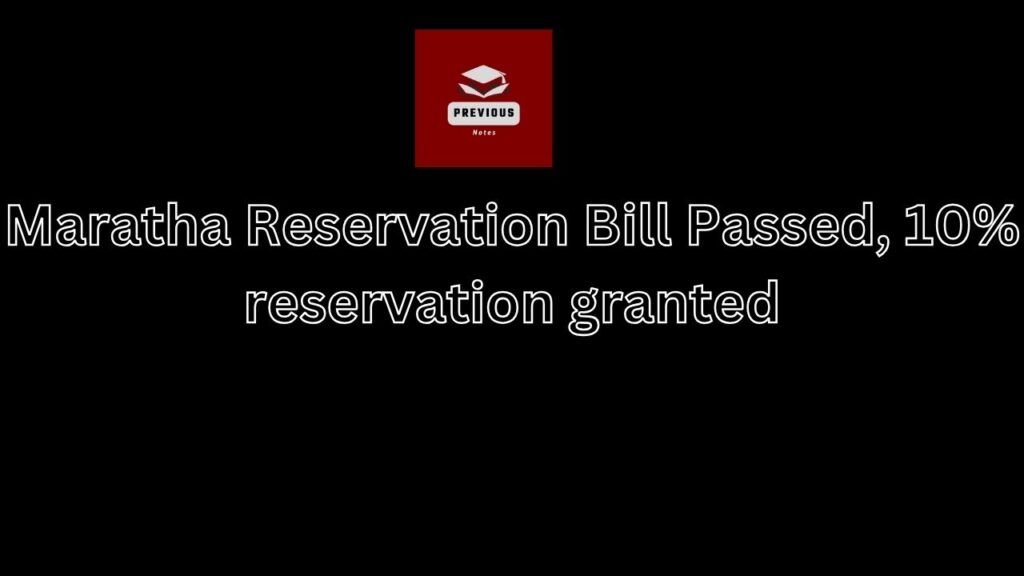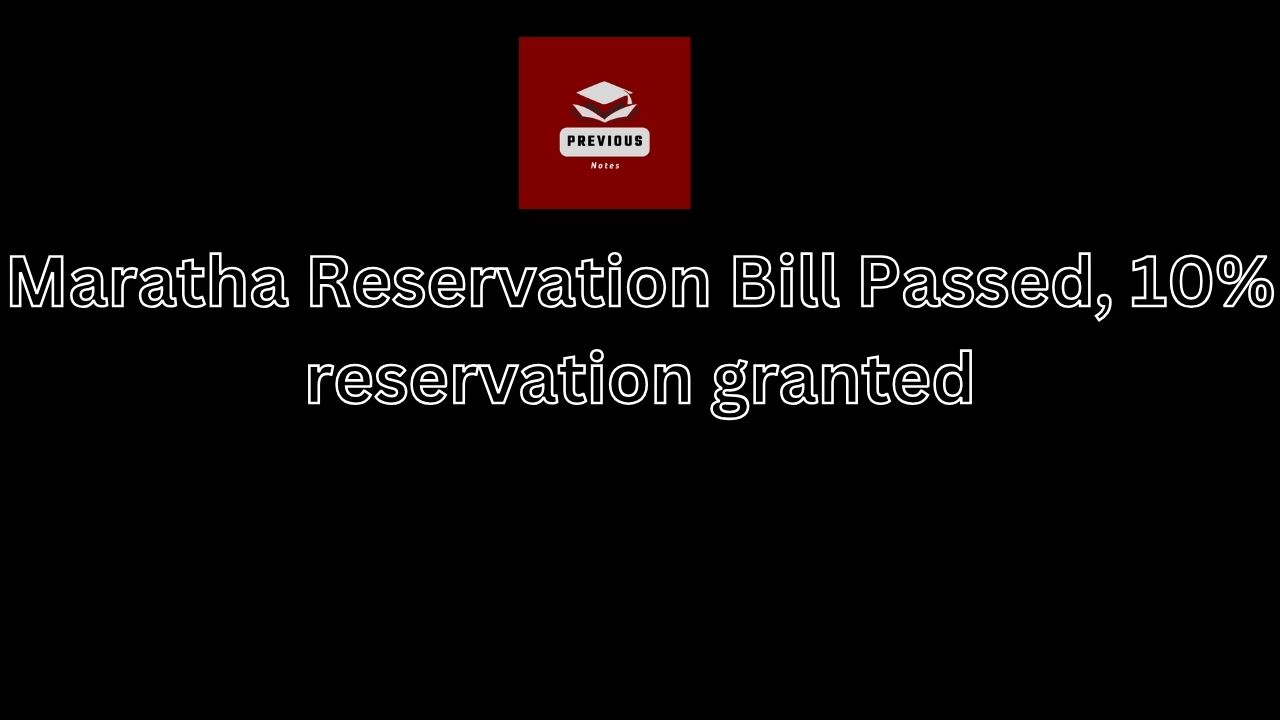Eknath Shinde Govt. in Maharashtra Passed the Maratha Reservation Bill today i.e. on 20.02.2024, granted 10% reservation to Maratha Community in both educational institutes and in government jobs.

Why Reservation was granted?
Reservation was granted based on State Backward Commission Survey report, key highlight of the survey is as under:
The survey reveals that 21.22 per cent of Maratha families are below the poverty line.
Exceeding the state’s average of 17.4 per cent.
Additionally, 84 per cent of Maratha families do not fall under the ‘progressed’ category.
indicates that 94 per cent of farmer suicides in Maharashtra involve Maratha families.
The Maharashtra Chief Minister’s Office (CMO) said, the survey by the backward class panel began on January 23 across Maharashtra, involving 3.5 to 4 lakh state government personnel, and it covered 2.5 crore families.
- A bill proposing 10 % quota for Marathas in education and jobs.
- Now, total reservation counts jumps to 62% in the State.
- Twenty-two states have more than 50%,” state chief minister Eknath Shinde said in the assembly today.
Add Your Heading Text Here
Manoj Jarange Patil, who is on hunger strike over this issue for last 11 days and the activist who led the movement, is not ready to end his hunger strike.
Patil has said the Maratha community “deserves” reservation under the Other Backward Class (OBC) category. “We need reservation which we deserve. Give reservation under OBC to those who have proof of being Kunbi, and those who don’t have proof of Kunbi, for them pass a law of Sage Soyare.”
“The government is giving us what we don’t want. We want a reservation in the Other Backward Classes (OBC) category, but they are giving us a separate quota instead. If the government doesn’t discuss and implement the draft notification on the reservation for blood relatives of Kunbi Marathas, we will decide on the course of the agitation tomorrow,” the activist said
“A separate reservation outside the OBC category might pose legal challenges, as it could exceed the 50 per cent reservation cap,” he added.
What are the legal Challenges?
Balaji Vs. State of Mysore, 1963
The case of Balaji vs. the State of Mysore, 1963, is a significant legal landmark in Indian constitutional law. This case challenged the validity of certain provisions of the Mysore government’s reservation policy.
Main Outcome of this Case:
- Validity of Article 15(4): The case primarily dealt with Article 15(4) of the Indian Constitution, which allows for special provisions for the advancement of socially and educationally backward classes of citizens or for Scheduled Castes and Scheduled Tribes.
- 50% Ceiling Limit: The Supreme Court, in its judgment, upheld the validity of reservations but ruled that the reservation policy should not exceed 50% of the available seats. This ruling established the principle of a 50% ceiling on reservations, which has since become a guiding principle for reservation policies in India.
- Further Classification of Backward Classes?: It disallowed the further classification of backward classes.
- Identification of Castes: The court acknowledged that caste can be one of the factors in identifying backward classes, but it should not be the sole criterion. The court emphasized that backward classes should be identified on the basis of social and educational backwardness rather than caste alone.
Indira Sawhney Vs. Union of India, 1992
The case of Indira Sawhney vs. Union of India, 1992, is a landmark judgment by the Supreme Court of India regarding reservations in public employment and educational institutions. The case is commonly referred to as the “Mandal Commission case.”
Here are the key points and outcomes of the Indira Sawhney case:
Background:
In 1990, the then Prime Minister, V.P. Singh, implemented the recommendations of the Mandal Commission, which proposed 27% reservation for Other Backward Classes (OBCs) in civil services and public sector undertakings.
The implementation of these recommendations led to widespread protests and legal challenges, resulting in the Indira Sawhney case.
Key Issues:
The main issue before the Supreme Court was the constitutionality of providing reservations to OBCs in public employment and educational institutions.
The petitioners argued that the reservations violated the principle of equality under Article 14 of the Constitution and exceeded the 50% cap set by the Balaji case (Balaji vs. State of Mysore, 1963).
Supreme Court’s Decision:
The Supreme Court, in its judgment delivered on November 16, 1992, upheld the constitutional validity of reservations for OBCs.
The court ruled that social and educational backwardness, along with inadequacy of representation, could be valid criteria for providing reservations.
The 50% ceiling on reservations was reiterated, but the court also recognized exceptional circumstances where exceeding this limit might be justifiable.
The court directed the exclusion of the “creamy layer” within the OBCs from the benefits of reservations. The “creamy layer” refers to the relatively more affluent and advanced sections within the OBCs.
Impact:
The judgment had a significant impact on reservation policies in India, particularly for OBCs.
It clarified the legal framework for reservations and established the concept of the “creamy layer” exclusion.
The decision also led to further debates on the need for reservations, criteria for determining backwardness, and the overall social justice framework in India.
The Indira Sawhney case remains a crucial reference point in discussions on affirmative action and reservations in India.
Reaction?
#WATCH | On Maratha Reservation Bill, NCP leader Chhagan Bhujbal says, "Today, the Eknath Shinde government has a law for separate reservations and we supported it. All we are saying is that the Maratha reservation should not be included in OBC…You have got a 10% Maratha… pic.twitter.com/0GkB1cHynm
— ANI (@ANI) February 20, 2024
After studying the bill the government table this bill and it was passed and it will stay in court too. I’m happy and we appreciate the government”, Uddhav Thackeray said.


















Leave a Reply